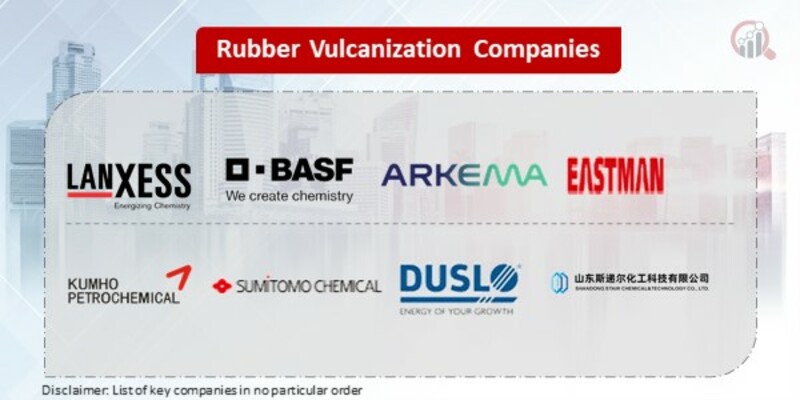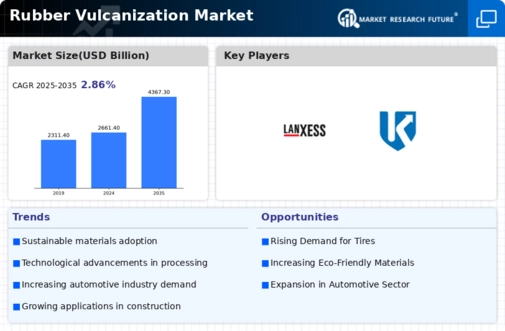Top Industry Leaders in the Rubber Vulcanization Market

The rubber vulcanization market is a dynamic and evolving space, driven by the increasing demand for rubber-based products across various industries. This demand is fueled by factors such as the booming automotive and construction sectors, rising disposable income, and advancements in medical technology
The rubber vulcanization market is currently experiencing a period of intense competition. Established players are fiercely defending their market positions, while new and emerging companies are aggressively trying to gain a foothold. This competition is driving innovation, cost reduction, and a focus on sustainability and environmental friendliness. The market is expected to continue growing in the coming years, fueled by the increasing demand for rubber-based products across diverse industries. This growth will create further opportunities for both established and new players, leading to a dynamic and ever-evolving competitive landscape in the rubber vulcanization market.
Strategies Adopted by Key Players:
Product Innovation: Leading players are heavily investing in research and development to create new and improved vulcanization chemicals with enhanced performance, sustainability, and environmental friendliness.
Expansion and Diversification: Companies are expanding their geographic reach and product portfolios to cater to the growing demand in emerging markets and explore new application areas.
Mergers and Acquisitions: Strategic mergers and acquisitions are being used to gain market share, access new technologies, and strengthen market positions.
Partnerships and Collaborations: Companies are partnering with academia, research institutions, and other industry players to leverage expertise and accelerate innovation in the vulcanization process.
Cost Optimization: Players are focusing on optimizing their production processes and supply chains to reduce costs and offer competitive pricing, especially in price-sensitive markets.
Factors for Market Share Analysis:
Product Portfolio: The breadth and depth of the vulcanization chemicals offered by each player, including their performance, sustainability, and environmental impact.
Production Capacity: The ability of each player to meet the demand for vulcanization chemicals efficiently and cost-effectively.
Geographical Reach: The presence of each player in key markets, including established and emerging economies.
R&D Capabilities: The ability of each player to innovate and develop new vulcanization technologies and products.
Customer Relationships: The strength and depth of relationships with key customers in major industries such as automotive, medical, and construction.
Key Players Listed in the Report
- LANXESS (Germany)
- BASF SE (Germany)
- Arkema SA (France)
- Eastman Chemical Company (US)
- Kumho Petrochemical (South Korea)
- Sumitomo Chemical Co., Ltd. (Japan)
- Duslo, a.s. (Slovakia)
- Shandong Stair Chemical & Technology Co., Ltd (China)
- Willing New Materials Technology Co., Ltd (China)
- King Industries, Inc (US)
Recent Development
July 2023:
Lanxess AG: Reported the send off of another line of vulcanization gas pedals explicitly intended for tire applications. These gas pedals offer superior handling productivity and decreased restoring times.
Kumho Petrochemical Co. Ltd: Divulged another innovation for creating superior execution vulcanized elastic materials with upgraded wear opposition and warm security.
August 2023:
Arkema S.A.: Consented to a joint improvement arrangement with Michelin (France) to investigate inventive vulcanization innovations for cutting edge tire fabricating.Emerald Execution Materials (US): Extended its creation limit with respect to vulcanization gas pedals in light of developing business sector interest.









